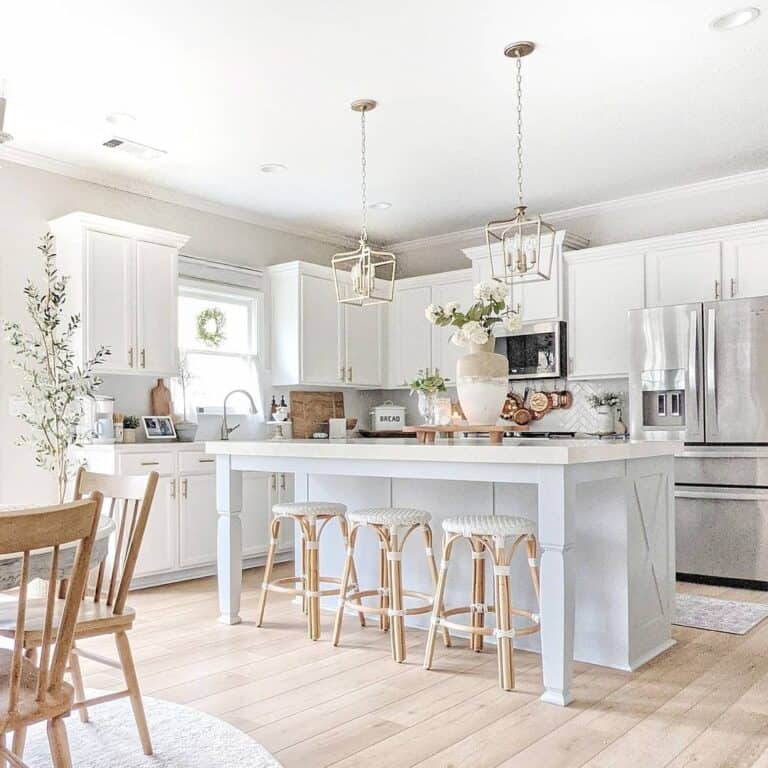A Guide to Choosing the Perfect Legs For Kitchen Island for Your Home
Picking the perfect legs for your cooking area island is a nuanced decision that impacts both the functionality and aesthetic allure of this central area. As you consider these aspects, it comes to be evident that the ideal legs can change not only the look of your kitchen area however likewise its use for years to come.

Understanding Cooking Area Island Legs
When selecting legs for a kitchen island, it's important to recognize their visual and functional duties in the general layout. The legs serve as a critical support system, ensuring security and resilience for the island, which often works as a workspace, dining location, or gathering area. Consequently, the option of product and construction method must be robust adequate to withstand everyday usage and potential wear.
In enhancement to their architectural responsibilities, legs contribute substantially to the island's visual allure. They can boost the cooking area's style, whether through conventional, modern, or diverse layouts. The elevation and proportion of the legs are also vital factors to consider; they must harmonize with the island's counter top height while making sure comfy seating for those utilizing the room.
In addition, the leg layout can affect the total circulation of the cooking area. Open, ventilated leg designs can produce a sense of lightness, while solid, substantial legs might share an extra based and steady visual - Legs For Kitchen Island. Understanding these visual and useful aspects will certainly lead home owners in making educated options that match their kitchen's design and boost its use
Popular Styles and Materials
The selection of legs for a kitchen area island encompasses a range of preferred styles and materials, each offering one-of-a-kind qualities that can improve both capability and aesthetic appeals. Traditional legs usually show ornate information and workmanship, enhancing traditional cooking area layouts.

Elevation and Security Factors To Consider

Security is one more crucial factor to consider. The legs of the cooking area island should give sufficient assistance, making sure that the structure can hold up against everyday usage without shifting or tottering. Product choice plays a significant function in security; metal legs, for example, have a tendency to offer higher toughness compared to timber. Additionally, making sure that the island is securely anchored to the flooring or wall surface can enhance security, specifically for larger islands that might bear considerable weight.
Matching Your Cooking Area Visual
Selecting the right legs for your kitchen island goes past capability; it likewise plays a considerable role in the overall visual of the area (Legs For Kitchen Island). When selecting legs, consider the layout style of your kitchen area.
Legs that enhance or contrast with your island's surface area and surrounding cabinets can create visual consistency or striking focal points. Furthermore, consider the surface of the legs; matte, shiny, or textured surfaces can significantly affect the total feel of the kitchen area.
Installment and Maintenance Tips
Setting up cooking area island legs requires careful interest to detail to make sure both security and visual allure. Make use of a stud finder to situate wall surface studs if you are attaching the legs to a wall or using brackets for added support.
When securing the legs, use top notch screws and, if essential, timber adhesive for added toughness. For steel legs, make sure that you are utilizing proper anchors and tools to stop damage to your flooring. It is advisable to check for levelness after installation, making changes as required to prevent wobbling.
Maintenance is equally vital for long life - Legs For Kitchen Island. Regularly examine the legs for any indicators of wear or loosening, particularly in high-traffic locations. Tidy the legs with an appropriate cleaner, avoiding unpleasant materials that may damage the surface. For wooden legs, take into consideration using a wood conditioner occasionally to preserve their coating. By complying with these installation and upkeep ideas, view you can make certain that your kitchen area island legs remain both visually attractive and functional.
Final Thought
Finally, choosing the proper legs for a kitchen island requires mindful consideration of height, security, and visual compatibility. By choosing suitable materials and designs that straighten with the overall kitchen area layout, functionality can be improved while preserving aesthetic charm. Proper setup and recurring upkeep further contribute to the longevity and longevity of the kitchen area island. Eventually, thoughtful leg option plays an essential function in raising both the functionality and layout of the cooking area room.
When picking legs for a cooking area island, it's essential to understand their aesthetic and functional roles in the general style. Open, airy leg styles can create a feeling of agility, while solid, substantial legs may convey an extra based and steady aesthetic. The legs of the cooking area island need to give appropriate support, making sure that the structure can withstand day-to-day usage without wobbling or changing.Setting up kitchen island legs requires careful focus to detail to ensure both security and visual charm.In final thought, selecting the ideal legs for a kitchen area island necessitates mindful factor to consider of elevation, stability, and visual compatibility.